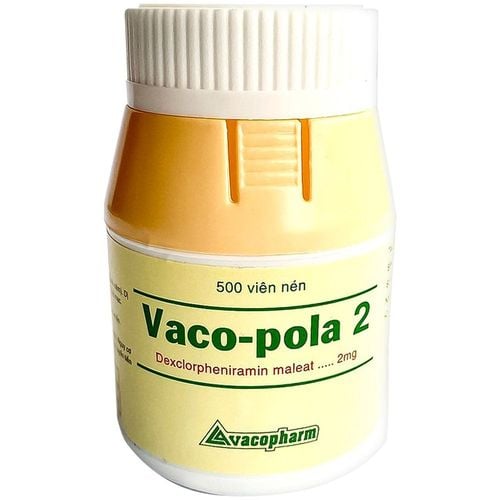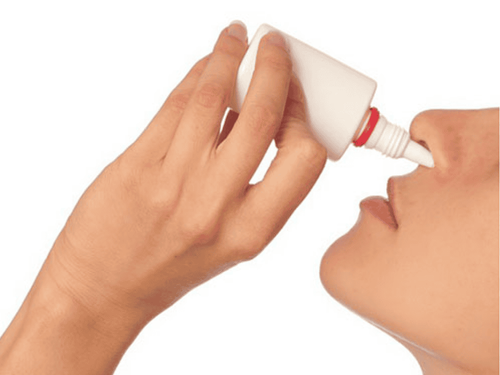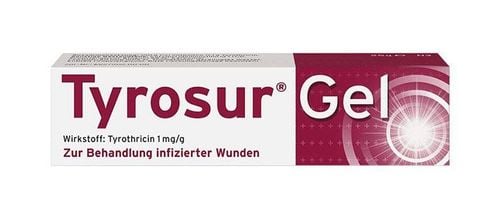This is an automatically translated article.
Eftilora contains Loratadine 10mg as the main ingredient. This is a prescription medication used in the treatment of allergy symptoms. To ensure effective use, users need to carefully read the instructions and follow the instructions of the doctor.
1. What is Eftilora 10mg?
Eftilora 10mg medicine has the main ingredient Loratadin 10mg. In addition, there are excipients just enough for 1 tablet: Lactose monohydrate, Corn starch, Wheat starch, Stearic acid, Colloidal Silica anhydrous, Sodium starch glycolate, Magnesium stearate, Talc powder, Purified water.
Eftilora 10mg is made in the form of tablets, a product of 3/2 Pharmaceutical Joint Stock Company (F.T.PHARMA) - Vietnam.
2. Uses of Eftilora 10 mg
Loratadine pharmacokinetics
Loratadine is a tricyclic antihistamine with a selective long-acting antagonistic effect on peripheral H1 receptors, but no CNS depressant effects. Loratadine is classified as a second-generation H1-receptor antagonist (without sedation). Loratadine is effective in alleviating symptoms of rhinitis and allergic conjunctivitis caused by histamine release. Loratadine also works to relieve itching and symptoms of urticaria related to histamine. In the treatment of urticaria, allergic rhinitis, loratadine has a faster effect than astemizol and has similar effects to cetirizine, azatadine, chlorpheniramine, terfenadine, clemastin and mequitazine. Loratadine has a lower incidence of side effects, especially those on the central nervous system, than other second-generation antihistamines. Loratadine is used only once a day, has a rapid effect, especially without sedative effect. Therefore, it is the drug of first choice for the treatment of allergic rhinitis or allergic urticaria. Allergic rhinitis is often a chronic disease and people with this disease will often have recurrences, to be completely cured, it is necessary to use long-term and intermittent antihistamines, in combination with other drugs such as glucocorticoids administered orally. prolonged inhalation. Loratadine pharmacokinetics
Loratadine is rapidly absorbed following oral administration, with mean peak plasma concentrations of loratadine and its active metabolite descarboethoxyloratadine in 1.5 and 3.7 hours, respectively. 97% of loratadine when entering the body bound to plasma proteins. The half-life of loratadine is 17 hours; of descarboetho-xyloratadine is 19 hours (this index of the drug is highly variable between individuals, blood urea does not affect this index, the index is increased in the elderly and people with cirrhosis). Clearance of the drug is 57 - 142 ml / min / kg, unaffected by blood urea, decreased in patients with cirrhosis. The volume of distribution of the drug in the body is 80-120 liters/kg. Loratadine undergoes extensive first-pass metabolism by the cytochrome P450 microsomal enzyme system, mainly to descarboethoxyloratadine, which is a pharmacologically active metabolite. Approximately 80% of the total dose of loratadine is excreted in urine and feces equally within 10 days as metabolites. Following oral administration of loratadine, its antihistamine effect appears within 4 hours, peaks after 8-12 hours, and persists for more than 24 hours. Steady-state concentrations of loratadine and descarboethoxyloratadine were reached in the majority of patients receiving the drug by about the fifth day of initiation.
3. Indications for use of Eftilora 10mg
Eftilora 10mg drug is indicated in the following cases:
People with symptoms of allergic rhinitis such as: Itching, sneezing, runny nose. People with symptoms of allergic conjunctivitis such as: Itchy eyes or burning eyes. People with symptoms of urticaria and allergic skin disorders.
4. Dosage and usage of Eftilora 10mg:
4.1.How to use Medicines are used orally with water.
4.2. Dosage Adults and children 12 years of age and older
Dosage: 1 tablet of Eftilora 10mg, once a day.
Children 2 - 12 years old
Weight > 30kg: take 1 tablet of Eftilora 10mg, once a day Weight ≤ 30kg: Currently, tablets containing loratadine 10mg are not suitable for children weighing less than 30 kg. Therefore, the use of Eftilora 10mg is not indicated for this subject. Patients with hepatic impairment
Patients with severe hepatic impairment should receive a lower starting dose because of possible decreased clearance of loratadine. A starting dose of 10 mg every other day is recommended for adults and children weighing > 30 kg. Note: Renal impairment and the elderly: it is not necessary to adjust the dose in this subject.
5. Side effects when using Eftilora 10mg
Some undesirable effects may appear such as fatigue, headache, nausea, rapid pulse, fainting, digestive disturbances and increased appetite.
6. Eftilora 10mg . drug interactions
Interactions between Eftilora 10mg may occur as follows:
Loratadine when taken orally is metabolised by cytochrome P450 isoenzymes CYP3A4 and CYP2D6. Therefore, concomitant use of this drug with drugs that inhibit or are metabolized by these enzymes may produce a change in the plasma concentrations of the drug and that may cause some unwanted effects of the drugs being used. Drugs known to inhibit the cytochrome P450 isoenzymes CYP3A4 and CYP2D6 include: cimetidine, ketoconazole, erythromycin, quinidine, fluconazole, and fluoxetin. Co-administration of loratadine and cimetidine in treatment leads to an increase in plasma concentrations of loratadine by 60%, because cimetidine inhibits the metabolism of loratadine. This phenomenon has no clinical manifestations. Concomitant use of loratadine and ketoconazole in treatment leads to a 3-fold increase in loratadine plasma concentrations, due to inhibition of CYP3A4. That has no clinical manifestations, because loratadine has a wide therapeutic index. If the concomitant use of loratadine and erythromycin in treatment leads to increased plasma concentrations of loratadine. The AUC (area under the concentration-time curve) of loratadine increased by an average of 40% and the AUC of desloratadine by an average of 46% compared with loratadine alone. There was no change in the QT interval on the electrocardiogram. Clinically, there were no changes in the safety of loratadine, no reported sedation or syncope with concomitant treatment.
7. When should Eftilora 10mg not be used?
Eftilora 10mg drug is contraindicated in the following cases:
For patients with a history of hypersensitivity to any ingredient of the drug, this drug should not be used. Concomitant use of loratadine and pseudoephedrine is contraindicated during and within 10 days of taking an MAO inhibitor, because these drugs may affect the effect of pseudoephedrine on blood pressure.
8. Notes when taking Eftilora 10mg
Note with caution when using the drug in people with liver or kidney failure. The drug should not be used during pregnancy & lactation. The drug should be stored in a dry place, the temperature is < 30oC, and avoid direct light. Eftilora contains Loratadine 10mg as the active ingredient. This is a prescription medication used in the treatment of allergy symptoms. To ensure effective use, users need to carefully read the instructions and follow the instructions of the doctor.
Follow Vinmec International General Hospital website to get more health, nutrition and beauty information to protect the health of yourself and your loved ones in your family.
Please dial HOTLINE for more information or register for an appointment HERE. Download MyVinmec app to make appointments faster and to manage your bookings easily.













